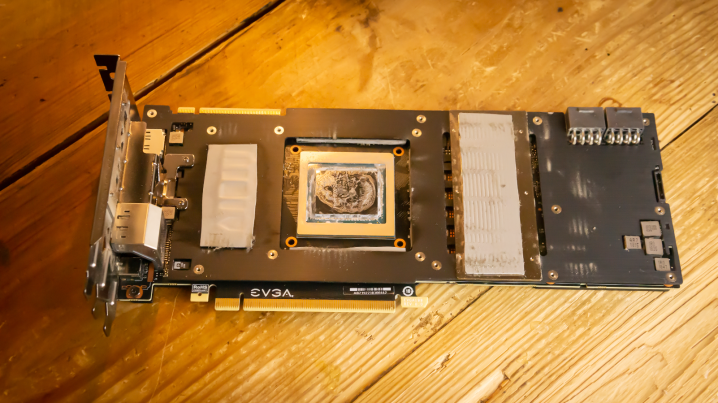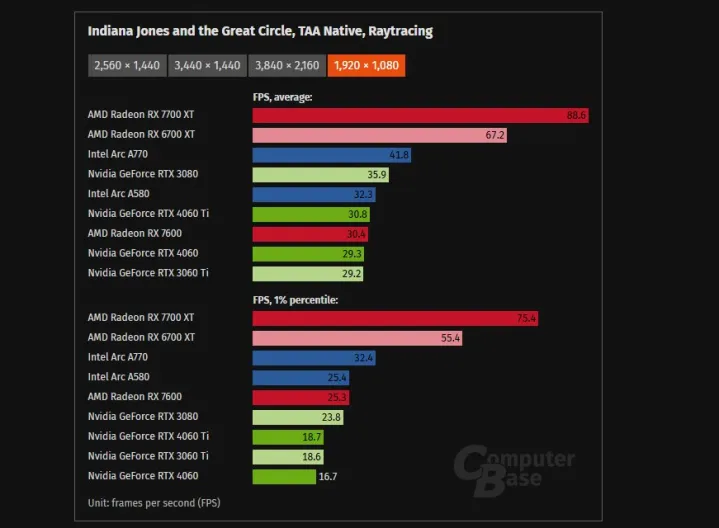2023 was one of the most disastrous years for PC gaming I can remember. In terms of highlights, we had games like Star Wars Jedi: Survivor, The Outer Worlds: Spacer’s Choice Edition, and Starfield, each hyped up as major launches. Regardless of what you thought about these games, they had terrible performance issues on PC at release, and as much as I hoped we’d see a course correction this year, that hasn’t been the case.
The major issues facing PC gaming today are largely the same as the issues it faced at this same point last year. What’s frustrating is that the issues in PC gaming today are solvable. Here’s what we saw this year, and how I hope the situation can improve in the next 12 months.
Unreal Engine 5 still stutters

Unreal Engine 5. Need I say more? It’s not a good idea to attribute performance issues solely to one game engine. It’s a combination of developers, tech, and workflow that ultimately leads to performance issues in PC releases, so you can’t pin blame solely on the engine a developer chooses to use. If level design makes massive levels and artists build highly-detailed meshes, and tech isn’t brought into those conversations, well, you can see what can go wrong with large AAA games during development.
But Unreal Engine 5 certainly doesn’t have a good track record.
There were some early stumbles in games like Immortals of Aveum and Lords of the Fallen, but as the year has continued and we’ve seen an uptick in UE5 games, there’s been a clearer trend of issues. I’m talking about games like Silent Hill 2, Stalker 2, and Black Myth: Wukong, and that’s before talking about Intel’s struggles with UE5 in games like Tekken 8.
The engine now includes automatic PSO caching and on-demand shader compilation, both of which should reduce stuttering. It just doesn’t seem to be working. I can’t think of a more inconsistent game I’ve played this year than Silent Hill 2, which should be smooth given its relatively slow, methodical movement. Regardless, so much as flipping the camera around causes a huge hitch, which isn’t uncommon in games packing Unreal Engine 5.

It’d be less easy to pin blame on UE5 if we didn’t see so many games using different tech to much greater effect. Indiana Jones and the Great Circle — despite some problems that I’ll get to next — is a rock-solid experience with its use of idTech 7. Dragon Age: The Veilguard is a perfect showcase for how powerful the FrostBite engine really is. And Like a Dragon: Infinite Wealth shows that the RGG Dragon Engine still has legs.
There are exceptions, of course — most notably Dragon’s Dogma 2 and its use of the RE Engine. But nearly every UE5 game I’ve played this year has suffered from some form of stuttering. Hopefully that won’t continue into next year because there are a lot of games slated to use Unreal Engine 5, including Avowed, The Witcher 4, Borderlands 4, and Metal Gear Solid Delta: Snake Eater.
VRAM is more important than ever

Outside of stuttering, the other big conversation in PC gaming has been VRAM. The issues started late in 2022 and really came to the forefront in 2023, with games like Resident Evil 4, The Callisto Protocol, The Last of Us Part I, and Redfall struggling to reach playable frame rates on 8GB graphics cards, particularly at higher resolutions and graphics settings.
Games like Indiana Jones and the Great Circle show that the VRAM issue is getting worse, not better. This is a game that can even bring the RTX 3080 and its 10GB of VRAM to its knees at 1080p. You can get better performance by turning down your graphics settings, but it’s a problem that a new 8GB graphics cards can’t max-out a AAA release at 1080p — simply due to VRAM limitations.
I don’t think we’re going back here. There have been plenty debates about how big the VRAM issue really is, and how much you can do with the whole memory system in order to improve performance without just slapping another memory module on a GPU. But as AAA games continue to become larger and more detailed, and as they experiment with more advanced lighting through ray tracing on full-on path tracing, VRAM capacity only become more important.

In fairness to AMD and Nvidia, we didn’t see a new generation of graphics cards this year. It’s fair to call 8GB GPUs like the RTX 4060 Ti and RX 7600 short-sighted — something AMD and Nvidia themselves seem to recognize due to the fact that these GPUs have variants with higher memory capacity — but it’s also fair for AMD and Nvidia to meet the needs of gamers with products at the time they released. And at the time, 8GB did the job, even if signs showed games trending in a different direction.
Now, it’s undeniable. There are still plenty of games that are just fine with 8GB of VRAM, so I don’t want to impose some lofty standard above that mark. If you just want to play Marvel Rivals or Baldur’s Gate 3 or Fortnite, you don’t have much to worry about. But if AMD and Nvidia really want to sell the idea of a premium 1080p gaming experience in the upcoming generation, it better be a GPU packing more than 8GB of VRAM.
Fixes for 2025

I’m under no illusions that a new date on the calendar will suddenly fix the issues with PC gaming, but there are a couple of simple ways that PC gaming could drastically improve in the upcoming year. And hopefully we see those solutions come to fruition.
VRAM is an easy issue to address — we need more VRAM on graphics cards. That doesn’t mean all 8GB graphics cards need to bite the dust, but I’d love to see any graphics card coming in over $300 have at least 12GB onboard. We can talk all day about the pricing of memory modules and manufacturing costs, but frankly, that’s not the concern of me or you. AMD and Nvidia are some of the largest and wealthiest companies in the world. Let them figure out the math.
We just got the Intel Arc B580, which is a $250 graphics card packing 12GB of VRAM. And sure enough, that extra capacity provides some legitimate performance benefits in games like Indiana Jones and the Great Circle at 1080p, and in even more games like Forza Motorsport at 1440p. The $230 RX 480 released more than eight years ago with 8GB of VRAM. It’s fair to demand more out of graphics cards at $300 today.
For stuttering, things are more nebulous. There are a couple of positive signs, however. Although automated PSO caching and on-demand shader compilation have been available in Unreal Engine 5 for a while, there’s a very good chance that the games we saw this year weren’t using the latest and greatest experimental features of the engine during development. Now that these features have been baked into a few core Unreal Engine 5 updates, I’m hopeful they’ll improve the stuttering situation on PC.
There are also the improvements of Unreal Engine 5 being more mature in general. As more developers learn how to leverage the engine properly, hopefully that leads to more stable experiences. That’s what we saw with games like Lies of P and Unreal Engine 4, at least.
There’s a lot to get excited about in the upcoming year, both on the game release front with titles like Doom: The Dark Ages and on the hardware front with new generations from AMD, Nvidia, and Intel. I don’t think PC gaming’s issues will go away in the next year, but I hope that some of the major trends we’ve seen over the past few years will finally be put to rest.
Services Marketplace – Listings, Bookings & Reviews
